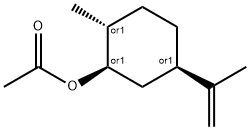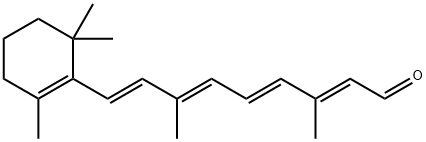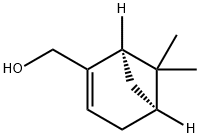1-OCTENE
Synonym(s):1-Octene;1-Octylene, Caprylene
- CAS NO.:111-66-0
- Empirical Formula: C8H16
- Molecular Weight: 112.21
- MDL number: MFCD00009548
- EINECS: 203-893-7
- SAFETY DATA SHEET (SDS)
- Update Date: 2024-06-26 14:42:13

What is 1-OCTENE?
Chemical properties
colourless liquid
Chemical properties
Colorless, clear liquid; gasoline aroma.
Physical properties
Clear, colorless, flammable liquid with a mild but unpleasant hydrocarbon odor. Based on a triangle bag odor method, an odor threshold concentration of 1.0 ppbv was reported by Nagata and Takeuchi (1990).
The Uses of 1-OCTENE
1-Octene acts as a comonomer used in the preparation of polyethylene, especially high-density polyethylene (HDPE) and linear low-density polyethylene(LLDPE) resins. It is also used in organic synthesis, surfactants and plasticizers. Further, it is used in process regulators and viscosity adjustors. In addition to this, it is used in the preparation of linear aldehyde through the oxo synthesis (hydroformylation) to get the nonanal.
The Uses of 1-OCTENE
Plasticizer; surfactants. Used as a comonomer in the production of high density polyethylene and linear low density polyethylene. Starting material for synthesis of a variety of compounds including nananoic acid.
The Uses of 1-OCTENE
1-Octene is a linear α-olefin mainly used as a comonomer in the synthesis of linear low-density polyethylene (LLDPE). Extensive work has been reported on the hydroformylation of 1-octene using various catalysts. It is also an important source to synthesize important petrochemical building blocks via epoxidation reaction.
What are the applications of Application
1-Octene is a comonomer used in production of polyethylene
Definition
ChEBI: An octene with an unsaturation C-1.
Production Methods
Production method: 1) from Allyl chloride and n-Amyl magnesium bromide. 2) from Octanol with Iodine and red phosphorus. 3) from Monosodium acetylene with Octyl iodide in liquid Ammonia at 40” C. under pressure.
Aroma threshold values
High strength odor; recommend smelling in a 1.00% solution or less.
Synthesis Reference(s)
Journal of the American Chemical Society, 93, p. 1487, 1971 DOI: 10.1021/ja00735a030
Tetrahedron Letters, 25, p. 1283, 1984 DOI: 10.1016/S0040-4039(01)80135-0
General Description
A colorless liquid. Flash point 70°F. Insoluble in water and less dense (at about 6 lb / gal) than water. Hence floats on water. Vapors are heavier than air and may settle in depressions. Reported to biodegrade very slowly. Used in organic synthesis, surfactants, and plasticizers.
Air & Water Reactions
Highly flammable. Insoluble in water.
Reactivity Profile
1-OCTENE may react vigorously with strong oxidizing agents. May react exothermically with reducing agents to release hydrogen gas. In the presence of various catalysts (such as acids) or initiators, may undergo exothermic addition polymerization reactions.
Health Hazard
Generally low toxicity. Mildly anesthetic at high vapor concentrations. May irritate eyes.
Source
Identified as one of 140 volatile constituents in used soybean oils collected from a processing plant that fried various beef, chicken, and veal products (Takeoka et al., 1996).
Environmental Fate
Biological. Biooxidation of 1-octene may occur yielding 7-octen-1-ol, which may oxidize to 7-
octenoic acid (Dugan, 1972).
Photolytic. Atkinson and Carter (1984) reported a rate constant of 8.1 x 10-18 cm3/molecule?sec
for the reaction of 1-octene and OH radicals in the atmosphere.
Chemical/Physical. The reaction of ozone and OH radicals with 1-octene was studied in a
flexible outdoor Teflon chamber (Paulson and Seinfeld, 1992). 1-Octene reacted with ozone
producing heptanal, a thermally stabilized C7 biradical, and hexane at yields of 80, 10, and 1%,
respectively. With OH radicals, only 15% of 1-octene was converted to heptanal. In both
reactions, the remaining compounds were tentatively identified as alkyl nitrates (Paulson and
Seinfeld, 1977). Grosjean et al. (1996) investigated the atmospheric chemistry of 1-octene with
ozone and an ozone-nitrogen oxide mixture under ambient conditions. The reaction of 1-octene
and ozone in the dark yielded formaldehyde, hexanal, heptanal, cyclohexanone, and a compound
tentatively identified as 2-oxoheptanal. The sunlight irradiation of 1-octene with ozone-nitrogen
oxide yielded the following carbonyls: formaldehyde, acetaldehyde, propanal, 2-butanone,
butanal, pentanal, glyoxal, hexanal, heptanal, and pentanal.
Chemical/Physical. Complete combustion in air yields carbon dioxide and water.
Purification Methods
Distil 1-octene under nitrogen from sodium which removes water and peroxides. Peroxides can also be removed by percolation through dried, acid washed, alumina. Store it under N2, or Ar in the dark. [Strukul & Michelin J Am Chem Soc 107 7563 1985, Beilstein 1 H 221, 1 II 199, 1 IV 874.]
Properties of 1-OCTENE
| Melting point: | -101 °C (lit.) |
| Boiling point: | 122-123 °C (lit.) |
| Density | 0.715 g/mL at 25 °C (lit.) |
| vapor density | 3.9 (vs air) |
| vapor pressure | 36 mm Hg ( 38 °C) |
| refractive index | n |
| FEMA | 4293 | 1-OCTENE |
| Flash point: | 70 °F |
| storage temp. | Store below +30°C. |
| solubility | Soluble in acetone, benzene, and chloroform (Weast, 1986). Miscible with alcohol, ether
(Windholz et al., 1983), and many aliphatic hydrocarbons. |
| form | Liquid |
| pka | >14 (Schwarzenbach et al., 1993) |
| Specific Gravity | 0.714 |
| color | Clear |
| Odor | gasoline |
| Odor Threshold | 0.001ppm |
| explosive limit | 0.7-6.8%(V) |
| Water Solubility | Miscible with water, ether, alcohol and acetone. |
| Merck | 14,1764 |
| JECFA Number | 2191 |
| BRN | 1734497 |
| Henry's Law Constant | 0.952 at 25 °C (Hine and Mookerjee, 1975) |
| Dielectric constant | 2.1(20℃) |
| Stability: | Stable. Highly flammable. Incompatible with strong oxidizing agents, acids. |
| CAS DataBase Reference | 111-66-0(CAS DataBase Reference) |
| EPA Substance Registry System | 1-Octene (111-66-0) |
Safety information for 1-OCTENE
| Signal word | Danger |
| Pictogram(s) |
 Flame Flammables GHS02  Health Hazard GHS08  Environment GHS09 |
| GHS Hazard Statements |
H225:Flammable liquids H304:Aspiration hazard H410:Hazardous to the aquatic environment, long-term hazard |
| Precautionary Statement Codes |
P210:Keep away from heat/sparks/open flames/hot surfaces. — No smoking. P233:Keep container tightly closed. P240:Ground/bond container and receiving equipment. P273:Avoid release to the environment. P331:Do NOT induce vomiting. P301+P310:IF SWALLOWED: Immediately call a POISON CENTER or doctor/physician. |
Computed Descriptors for 1-OCTENE
Abamectin manufacturer
New Products
4-AMINO-TETRAHYDRO-PYRAN-4-CARBOXYLIC ACID HCL 4-(Dimethylamino)tetrahydro-2H-pyran-4-carbonitrile 4-Aminotetrahydropyran-4-carbonitrile Hydrochloride (R)-3-Aminobutanenitrile Hydrochloride 3-((Dimethylamino)methyl)-5-methylhexan-2-one oxalate 1,4-Dioxa-8-azaspiro[4.5]decane 5-Bromo-2-nitropyridine Nimesulide BP Aceclofenac IP/BP/EP Mefenamic Acid IP/BP/EP/USP Diclofenac Sodium IP/BP/EP/USP Ornidazole IP Diclofenac Potassium THOMAIND PAPER PH 2.0 TO 4.5 1 BOX BUFFER CAPSULE PH 9.2 - 10 CAP SODIUM CHLORIDE 0.1N CVS ALLOXAN MONOHYDRATE 98% PLATINUM 0.5% ON 3 MM ALUMINA PELLETS (TYPE 73) LITHIUM AAS SOLUTION 2-Bromo-1-(bromomethyl)-3-chloro-5-nitrobenzene 2-Bromo-3-nitroaniline N-(3-Hydroxypropyl)-N-methylacetamide 3-Bromo-6-chloropyridazine 4-ethyl-3-nitrobenzoic acidRelated products of tetrahydrofuran








You may like
-
 Octene, 98% CAS 111-66-0View Details
Octene, 98% CAS 111-66-0View Details
111-66-0 -
 Oct-1-ene CAS 111-66-0View Details
Oct-1-ene CAS 111-66-0View Details
111-66-0 -
 1-Octene CAS 111-66-0View Details
1-Octene CAS 111-66-0View Details
111-66-0 -
![1-Octene [Standard Material for GC] CAS 111-66-0](https://img.chemicalbook.in//Content/image/CP5.jpg) 1-Octene [Standard Material for GC] CAS 111-66-0View Details
1-Octene [Standard Material for GC] CAS 111-66-0View Details
111-66-0 -
 1-Octene CAS 111-66-0View Details
1-Octene CAS 111-66-0View Details
111-66-0 -
 1-Octene CAS 111-66-0View Details
1-Octene CAS 111-66-0View Details
111-66-0 -
 1-Octene CAS 111-66-0View Details
1-Octene CAS 111-66-0View Details
111-66-0 -
 1-Octene CAS 111-66-0View Details
1-Octene CAS 111-66-0View Details
111-66-0